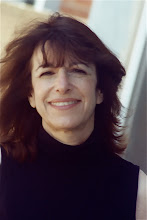I've been working full-bore on my fifth picture book biography. The writing won't come til I can vividly imagine the setting of the story-which might include geography and the culture of the times.
Here are good examples of setting from picture books about historical figures. Notice the use of cultural artifacts and details about natural environment:

"In the days when farmers worked with ox and sled and cut the dark with lantern light, there lived a boy who loved snow more than anything else in the world. Willie Bentley's happiest days were snowstorm days. He watched snowflakes fall on his mittens, on the dried grass of Vermont farm fields, on the dark metal handle of the barn door." - Jacqueline Briggs Martin's Snowflake Bentley

"On an island called Puerto Rico, where baseball players are as plentiful as tropical flowers in a rain forest, there was a boy who had very little but a fever to play and win at baseball. He had no money for a baseball bat, so he made one from a guava tree branch." - Jonah Winter's Roberto Clemente

"They came face to face with a fish as big as a truck-with long fangs, lips like giant tires, and huge saucer eyes. They called it the truckfish. On the bottom, they found pink ghost crabs, with eyes on long stalks, buried so deep in the sand they looked like a garden of eyes." - Jennifer Berne's Manfish: The Story of Jacques Cousteau
"We'd wander in the gardens, he and I, beside the pleasure lake where lot
 us blossoms grew. The servant girls would come on soundless feet and bring us fruit- grapes, dates and figs- the baskets balanced on their heads, a cloth of linen spread beneath a canopy that kept us from the sun. And we would feast while harpists played." Eve Bunting's I Am the Mummy Heb Nefert
us blossoms grew. The servant girls would come on soundless feet and bring us fruit- grapes, dates and figs- the baskets balanced on their heads, a cloth of linen spread beneath a canopy that kept us from the sun. And we would feast while harpists played." Eve Bunting's I Am the Mummy Heb NefertWhere does a writer track down these kinds of details? So far I've read biographies and novels- and watched movies- from the same time period and location as my subject. I've looked at paintings and cartoons and researched period costume. I've visited one of the locations where he lived, and taken a field trip to an equestrian center- because horses and jumping events may play a part in the story. For one section I'll need to learn more about the type of office he worked in, and the tools of his trade.
Once my imagination is furnished with the imagery, once I feel like I "own" the material, I can start writing. The hours of research required are a way of honoring the subject matter.
In other news: Tyrannosaurus Math has been licensed to the Scholastic Book Club, and it's also coming out in Japanese. A belated congrats to Barbara Bietz for her Beautiful Blogger award, and thanks for "passing the award on" to the TC&TF.








I can’t wait to read it. May I ask the subject of your work in progress?, or would you prefer to keep it to yourself?
ReplyDeleteOn the advice of my editor, mum's the word (because it's a non-fiction project). Perhaps when we get closer to publication I can share. I appreciate your interest!
ReplyDeleteI'm sure it will be worth the wait. :)
ReplyDeleteGreat post! Good details on the pb world of biography.
ReplyDeleteDarcy
BRILLIANT POST!!! Great examples.
ReplyDeleteWonderful insights. And I can't
wait to see/read (when it's ready
for the world to see) what you're up
to conjuring now.
xoxox
topangamaria
These were wonderfully helpful. When you write a picture book biography of someone who is still alive, such as Roberto Clemente, do you show him the text before you submit it? Did you interview him personally?
ReplyDeleteCaroline McAlister
Author of
Holy Mole!
and
Brave Donatella and the Jasmine Thief